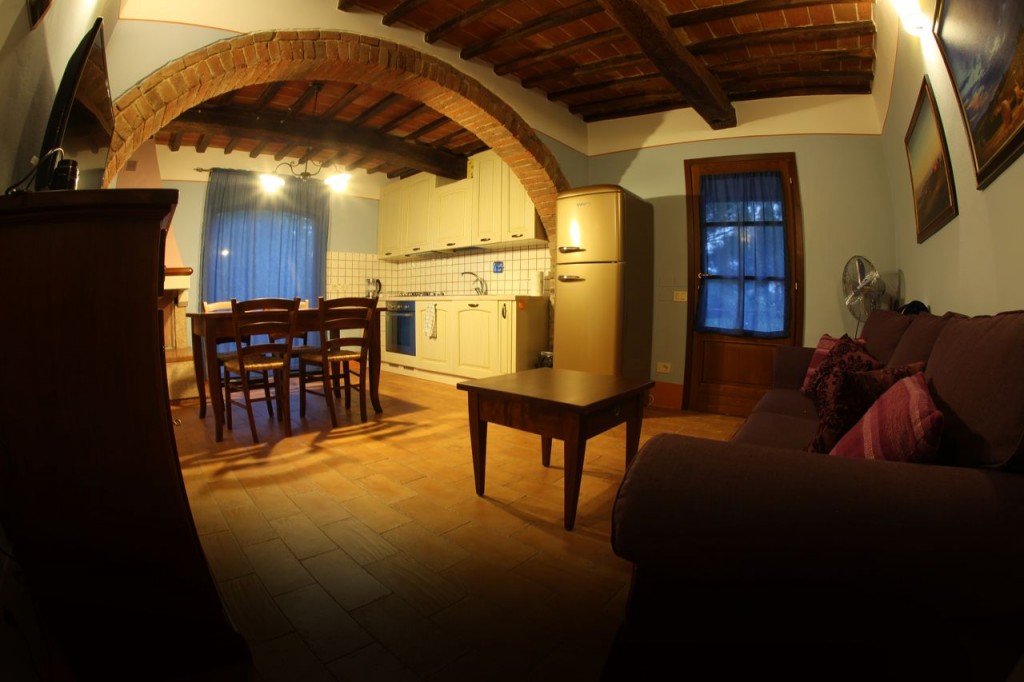Content
The book in which these classified accounts are kept is known as ledger. A ledger account can be checked any time to see the additions and reductions of particular item to which the account relates. The cash account, for example, would reveal the inflows and out flows of cash during a particular period of time. Before pacioli’s contribution, some form of double entry system was already in practice.
Accounting is more than just the act of keeping a list of debits and credits. It is the language of business and, by extension, of all things financial. Our senses collect information from our surroundings that our brains then interpret; accountants translate the complexities of finance into information that the public can understand. In this article, we will follow accounting from its roots in ancient times to its modern equivalent. The chapter educated readers about the use of journals and ledgers; accounting for assets, receivables, inventories, liabilities, capital, income and expenses; and keeping a balance sheet and an income statement. In 1458 Benedetto Cotrugli invented the double-entry accounting system, which revolutionized accounting. Double-entry accounting is defined as any bookkeeping system that involves a debit and/or credit entry for transactions.
- In the simplest form, this meant creating a balance sheet with separate debits and credits.
- Without the work of an otherwise obscure Franciscan friar in the fifteenth and sixteenth centuries, the economy as we know it today could not exist.
- It creates an equilibrium within the records which helps in detecting errors, omissions and frauds.
- Up to the 1800s, investing had been either a game of knowledge or luck.
- Most of the manual and computerized accounting systems are based on it.
Luca Pacioli shows that accounting is not just a set of rules, it is a purpose. I really appreciate this approach, because he does not just tell you what to do. The name Luca Pacioli shouldn’t be strange to you if you are an accountant, accounting student or an aspiring accountant. Infact, Luca Pacioli is described as the father of mordern day accounting. While it is sometimes said that Pacioli offered nothing new to the sciences, https://business-accounting.net/ his works stand as a monument to Renaissance publishing, being as they were a compendium of the significant intellectual accomplishments of his time. His life was enriched by the friendships he made with historic personages, and his writings attest to many facts that would otherwise have been lost to subsequent generations. Woodcut from De divina proportione illustrating the golden ratio as applied to the human face.
This book was written on Geometry, Everything about Arithmetic and Proportions. In this book, he presented the guide to the already written mathematical knowledge and bookkeeping was one of the most important accounting topics covered in this book. He presented 36 short written chapters on bookkeeping in which he gave the necessary instructions in the conduct of business and given the traders precious information on accounting without any delay as to his assets and liabilities. Luca Pacioli also introduced numerous details about bookkeeping techniques which were followed in texts and in professions for the next four centuries. Then the accounting historian Henry Rand Hatfield argued that Pacioli’s work was potentially significant even at the time of publication when it was first printed in November 10, 1494. Now his underlined accounting principles are used by various accounting practitioners in industrial accounting, public accounting, and accounting services for non-profit organizations. Due to his double-entry bookkeeping system in accounting, organizations can follow the transactions from one business to another which gave them right directions in financial growth.
Why Luca Pacioli Is Called The Father Of Accounting?
The third volume of Pacioli’s De divina proportione was an Italian translation of Piero della Francesca’s Latin writings On Five Regular Solids, but it did not include an attribution to Piero. He was severely criticized for that by sixteenth-century art historian and biographer Giorgio Vasari.
He talks about the typical work day for a merchant, he describes the business owner reviewing his books in the evenings before bed. And he talks numerous times about the importance of hard work, and not being lazy. So accounting was not designed to make your life easier, it was to make your life harder.
Brief History Of Accounting
Pacioli’s description of double-entry bookkeeping led to the rise of modern accounting, accurate record-keeping, and the overall growth of industry and trade. Understanding his role in accounting history is important for understanding Western history and the way in which the economy functions today.
- During this period, he wrote his first book, a treatise on arithmetic for the boys he was teaching.
- A general ledger is the record-keeping system for a company’s financial data, with debit and credit account records validated by a trial balance.
- Not only that, but it introduced the symbols for plus and minus as well as offering advice on the ethics of business.
- The contribution of Luca pacioli in accounting was honored by accountants around the world who gathered in San Sepulcro an Italian village to pay their huge tribute to his book published on double-entry accounting.
It is the basic principle of double entry system and there is no exception to it. For example if a business purchases furniture for $500 cash, the value of total furniture is increased by $500 and at the same time, the cash amounting to $500 is decreased. If the business is using double entry system of accounting, it must debit the furniture account by $500 and credit the cash account by $500.
Early History To 17th Century
The day, which recognises accountants, began to be celebrated to honour Pacioli, born in 1445 in Tuscany, Italy. Pacioli’s book was the first great general work on mathematics that was widely read and used by mathematicians in the 16th century. The book was also the first to include information on double-entry bookkeeping, which involves debit and credit entries for transactions, known as ‘the method of Venice’ that time. This is the very first record on double-entry book-keeping that laid the foundation for future works on business accounting. The author of the book was an Italian mathematician called Luca Bartolomeo de Pacioli, who described the use of journals and ledgers. He warned that one should not sleep at night until the debits equalled the credits.
The third volume of Pacioli’s Divina proportione was an Italian translation of Piero della Francesca’s Latin writings On Five Regular Solids. He was severely criticized for this and accused of plagiarism by sixteenth-century art historian and biographer Giorgio Vasari. R. Emmett Taylor (1889–1956) said that Pacioli may have had nothing to do with the translated volume Divina proportione, and that it may just have been appended to his work. However, no such defense can be presented concerning the inclusion of Piero della Francesca’s material in Pacioli’s Summa. This is a book containing a small account of Pacioli’s life, a translation of the bookkeeping Treatise in his book Summa de Arithmetica, Geometria, Proprtioni et Proportionalita, and the Original Treatise reproduced.
It is also in recognition of key role of the accountants in enhancing public trust through high-quality financial reporting. The day is a good reminder to celebrate a century-old profession that is vital to business success.
Evolution Of Accounting And Accounting Terminology
His ledger had accounts for assets , liabilities, capital, income, and expenses—the account categories that are reported on an organization’s balance sheet father of modern accounting and income statement, respectively. He demonstrated year-end closing entries and proposed that a trial balance be used to prove a balanced ledger.
Emmett Taylor (1889–1956) said that Pacioli may have had nothing to do with that volume of translation, and that it may just have been appended to his work. Beginner Bookkeeping— Knowing the accounting terms in this dictionary is helpful to understanding the history of accounting. Luca Pacioli also wrote an unpublished treatise on chess, De ludo scachorum .
Organizations become much familiar about yearend accounting entries to make the best records of their expenditures and income in the form of yearend financial statements and income statements of the organizations. The system introduced by Luca Pacioli was efficient and reliable in record keeping for all types of businesses and organizations and it established the financial understanding through global investment possibilities. Today, investors, shareholders, business firms and lending institutions have appreciated and recognized his contributions as vital in the financial growth of different businesses around the world. His accounting systems and double-entry bookkeeping record systems are most widely used around the world in different manufacturing, industrial, services, and hospitality organizations. No organization can survive without adopting his introduced record keeping and double-entry accounting systems and system of accounting cycle which is most widely taught and used in professionals’ organizations and accounts institutions.
Life Of Luca Pacioli
The contribution of Luca pacioli in accounting was honored by accountants around the world who gathered in San Sepulcro an Italian village to pay their huge tribute to his book published on double-entry accounting. The first accounting book which was published in 1494 was based on five sections in his mathematical book title in which he showed ‘Everything about Arithmetic, Geometry and Proportions’. Until the 16th century, this book written on accounting served as the only textbook on accounting around the world and due to this significant contribution, Luca Pacioli, was no doubt the father of accounting. He did not invent the system but he described the method which was used by merchants in Venice during the period of Italian Renaissance. The system he introduced in his book of accounting was mostly the accounting cycle which is well-known in the modern world of accounting.
- Nevertheless, Pacioli’s summation of the method was incredibly important for the history of accounting, as it was one of the first descriptions of double-entry bookkeeping to be distributed on a large scale.
- Accountants often belonged to the same associations as solicitors, who often offered accounting services to their clients.
- In the bustle of exploding global trade, the Institute of Chartered Accountants in England and Wales came to life in 1880, and quickly thereafter, the American Institute of Certified Professional Accountants in 1887.
- Two versions of the original manuscript are extant, one in the Biblioteca Ambrosiana in Milan, the other in the Bibliothèque Publique et Universitaire in Geneva.
- In this article, we will follow accounting from its roots in ancient times to its modern equivalent.
- He is an expert on personal finance, corporate finance and real estate and has assisted thousands of clients in meeting their financial goals over his career.
Accountants were already essential for attracting investors, and they quickly became essential for maintaining investor confidence. The American Association of Public Accountants was established in 1887, and the accounting profession was formally recognized in 1896 with the establishment of the professional title of certified public accountant . The shrinking of the country thanks to the railroads and the introduction of uniformity encouraged investment, which, in turn, put more focus on accounting. Up to the 1800s, investing had been either a game of knowledge or luck.
Top 10 Accounting Professional Bodies In The World In 2022
Luca Pacioli, a Franciscan friar and collaborator of Leonardo da Vinci, first codified the system in his mathematics textbook Summa de arithmetica, geometria, proportioni et proportionalità published in Venice in 1494. Luca Pacioli came from a poor family and lived in Italy during the Renaissance. If you remember what happened during the Renaissance, Italy had all these coastal cities that were important trade routes across the Mediterranean. These cities became very wealthy, and you had a whole new type of business environment with wealthy merchant families. This is a big contrast from the Dark Ages, where the wealth was controlled by monarchies.
Meaning, Purpose And Users Of Public Sector Accounting
However, it was pacioli’s book that introduced the system in Europe and other trading countries of the world. As the acknowledgement of his work, Pacioli is known as the “father of accounting” by modern accounting professionals. A general ledger is the record-keeping system for a company’s financial data, with debit and credit account records validated by a trial balance. As part of the tradition of learned monks conducting high-level scientific and philosophical research in the 15th century, Italian monk Luca Pacioli revamped the common bookkeeping structure and laid the groundwork for modern accounting. Pacioli, who is commonly known as “the father of accounting,” published a textbook called “Summa de Arithmetica, Geometria, Proportioni et Proportionalita” in 1494, which showed the benefits of a double-entry system for bookkeeping. Born in 1445 in Tuscany, Pacioli is known today as the father of accounting and bookkeeping. He wrote Summa de Arithmetica, Geometria, Proportioni et Proportionalita (“The Collected Knowledge of Arithmetic, Geometry, Proportion, and Proportionality”) in 1494, which included a 27-page treatise on bookkeeping.
Much of Pacioli’s work in mathematics was not original or unique, but his writings had a large influence in Italy, allowing for information that was formerly the possession merely of the elite to be disseminated among the general populace. Pacioli died in 1517, the same year that Martin Luther’s 95 Theses in Germany would help spark the Protestant Reformation. In 1499, Pacioli and Leonardo were forced to flee Milan when Louis XII of France seized the city and drove out their patron.



























